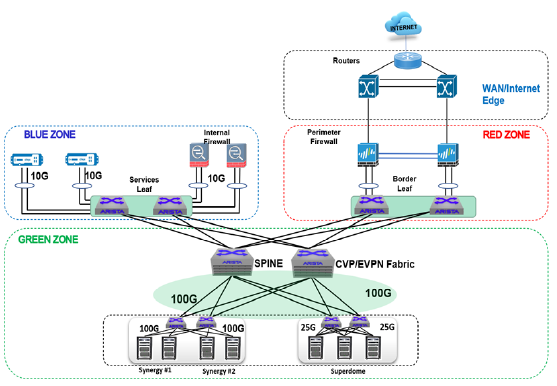From Legacy to Leading-edge: Revolutionizing Healthcare Networks for the Future
Nov 23, 2023
About the Client
Customer is one of the largest non-profit healthcare providers in New Jersey providing a wide array of healthcare services. Customer serves more than half the state of NJ providing care for health needs including critical patient care services. They are known for providing exceptional patient outcomes, and experiences and are committed to providing the highest quality care.
Executive Summary
The customer had started a strategic initiative for on-prem Data Center transformation from legacy 3-tier architecture to next-generation scalable network infrastructure. This strategic initiative was the outcome of multiple challenges & limitations encountered by customers with legacy 3-tier architecture such as Performance bottlenecks, scalability issues, limited redundancy, and limited security.
This transformation enabled the Customer to overcome performance bottlenecks, and achieve better scalability, security, and high availability of the healthcare applications. We worked with Customer to build a robust next-gen network infrastructure to achieve their objectives.
Goals
- Scalable Infrastructure: The scalability of infrastructure is of prime importance for healthcare providers to accommodate future growth without impacting critical applications and services. Customers wanted to design a network infrastructure that could seamlessly scale horizontally and vertically to accommodate growing workloads and the ability to support newer healthcare facilities.
- Enhanced Performance: Customers wanted next-gen infrastructure providing better network performance and reduced latency to provide enhanced user experience for health care services. Reduced latency is important for healthcare services to ensure real-time data transmission for critical applications.
- Segmentation and Security: The Data Center did not have visibility into traffic accessing the DC resources. The customer wanted to introduce a layer of Firewalls to achieve improvement in Security footprint to ensure compliance with industry standards and additionally get better visibility as well as granular security controls.
- High availability: Downtime of critical healthcare applications and services can have drastic consequences. Customer wanted a very robust infrastructure providing redundancy and high availability to minimize downtime of healthcare applications and services.
- Simplified Management: Achieving simplified management was important for Customer as part of this transformation journey to reduce operational complexity and optimize network administration.
Solutions and Outcomes
- Leaf-Spine Scalable Architecture: The legacy 3-tier architecture was replaced with Arista leaf-spine VxLAN (MP-BGP/EVPN) architecture to achieve better scalability and reduced latency. The new architecture supports horizontal scalability by adding more leaf switches without disrupting existing services. It also supports vertical scalability by using high-capacity spine switches and the ability to add more switches if needed. This allows Data Centers to easily accommodate growing workloads by adding more devices or racks without disturbing patient care.
- Enhanced Performance: The Spine-Leaf architecture resulted in enhanced performance, lower latency, and better patient care experience. New architecture resulted in a reduced number of hops that the packet needs to traverse between devices. High-performance devices were utilized to ensure higher throughput and faster processing of data. The new architecture can now accommodate increasing data traffic needs ensuring the Customer could expand without any constraints. High-speed and non-blocking connections between Leaf and Spine help deliver an improved user experience for healthcare services.
- Segmentation and Security: Palo Alto Firewalls were introduced at the internal Core layer to achieve network segmentation, enhanced security, and compliance. This resulted in providing visibility and granular security controls for east-west traffic. The new architecture resulted in a more resilient network against potential threats reducing the risk of network disruptions. It also resulted in the more reliable network to better handle unexpected traffic patterns and network anomalies. VRF instances and separate Firewall Zones were used for Campus Hospitals and remote sites to ensure proper inspection and protection for the traffic coming from these locations. The introduction of firewalls and advanced security controls led to enhancement in the Data Center's security posture.
- High-Availability: New architecture was designed with redundancy to achieve faster failover, and routing convergence and minimize the risk of downtime. Leaf-spine architecture provides redundancy through multiple paths between leaf and spine switches. In the event the switch or link fails, the traffic can automatically failover to a redundant link/switch thus minimizing downtime. All the devices including Switches and Firewalls were configured with the necessary failover mechanism which resulted in ensuring continuous availability of critical healthcare services.
- Simplified Management: Overall network management was simplified using Arista CloudVision and Palo Alto Panorama ensuring reduced operational complexity. The new architecture made it easier to configure, monitor, and troubleshoot network devices. This resulted in reduced administrative overhead, faster issue resolution, improved network agility, and helping Customer to focus more on strategic requirements.
This transformation journey from Legacy 3-tier architecture to Next-gen leaf-spine scalable architecture brought significant enhancements in overall performance, scalability, redundancy, and security of the infrastructure.





